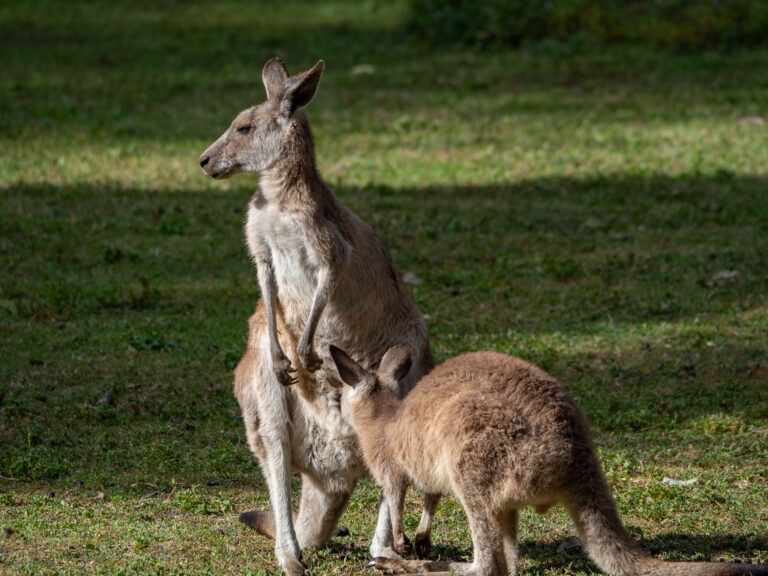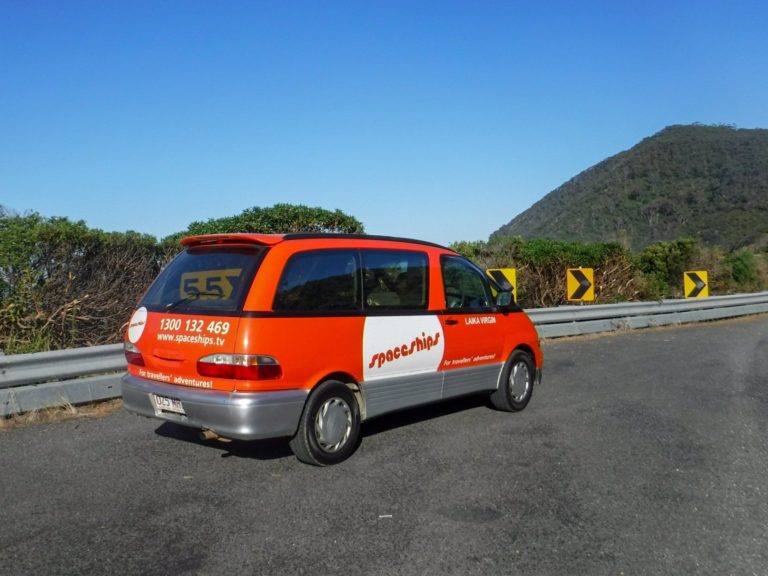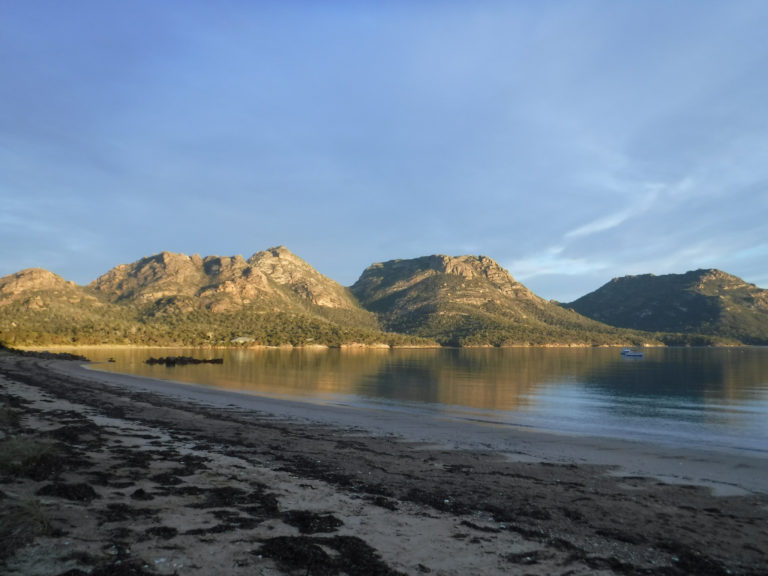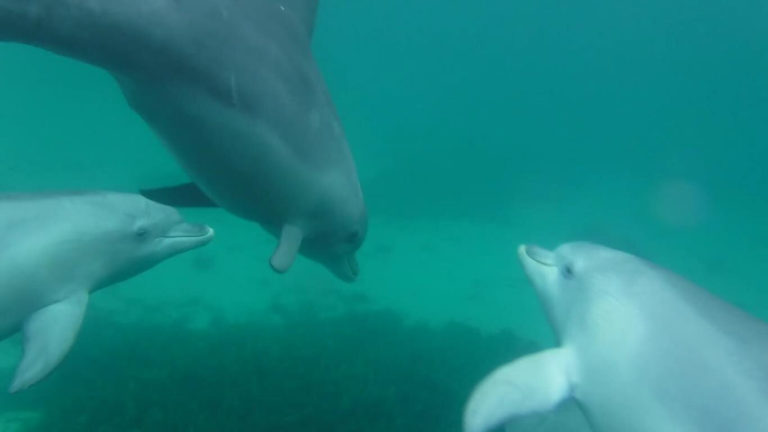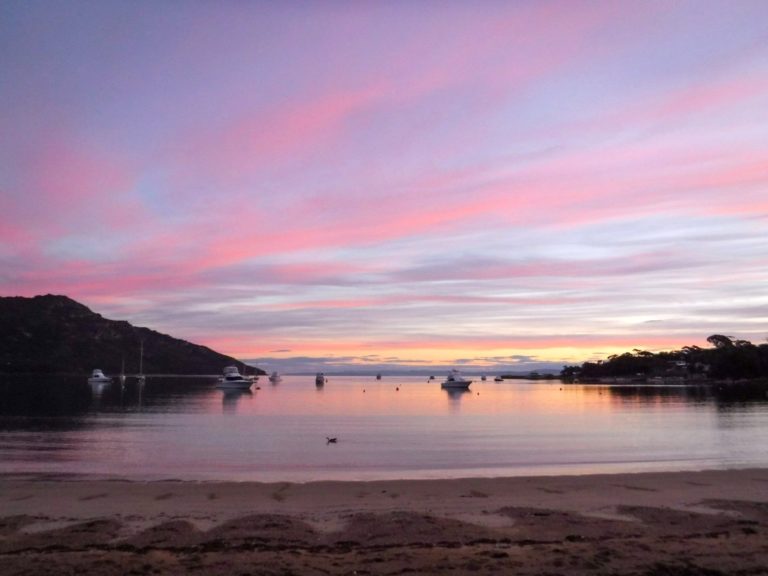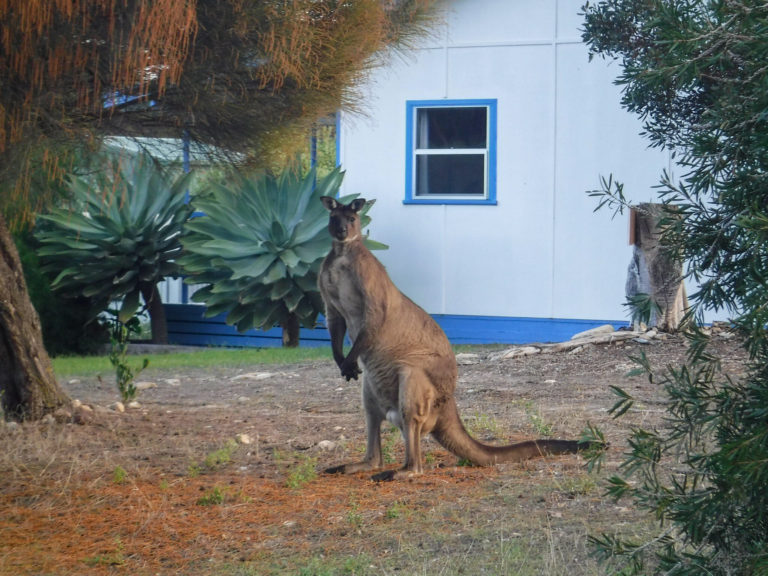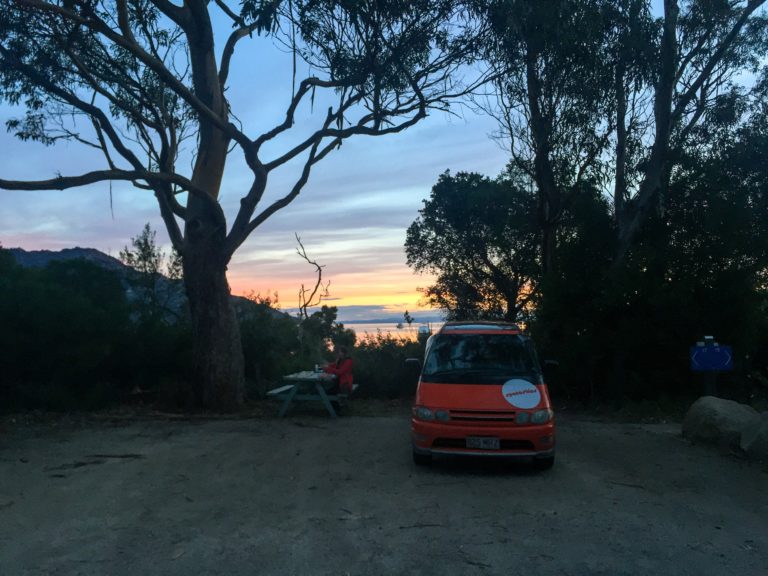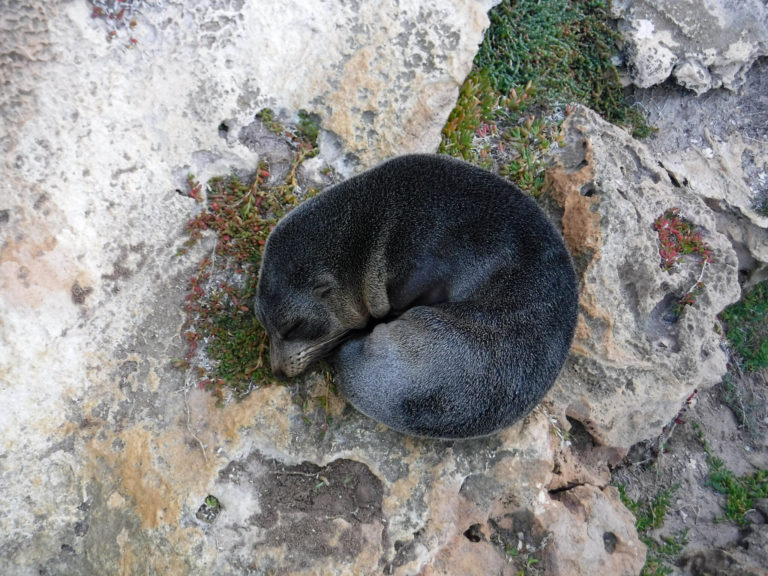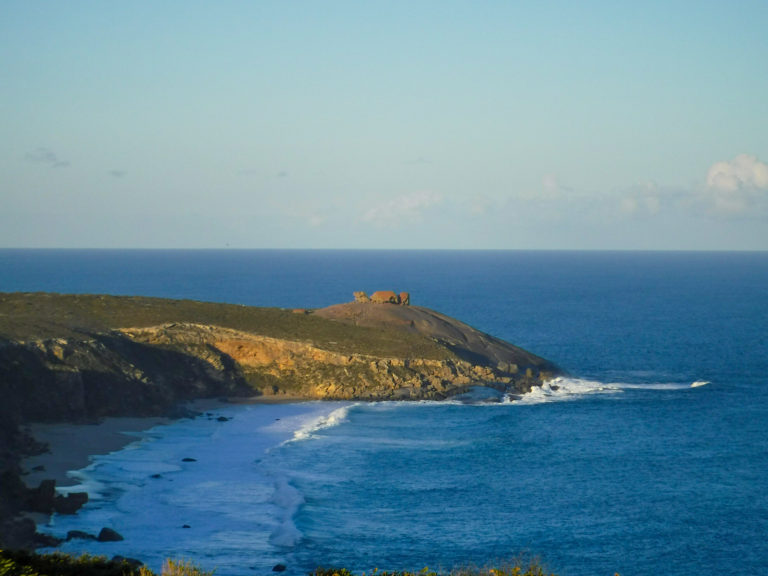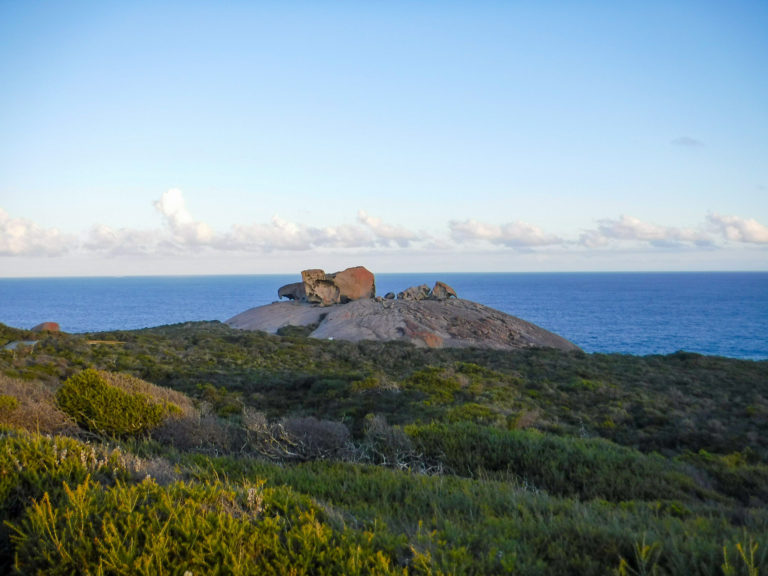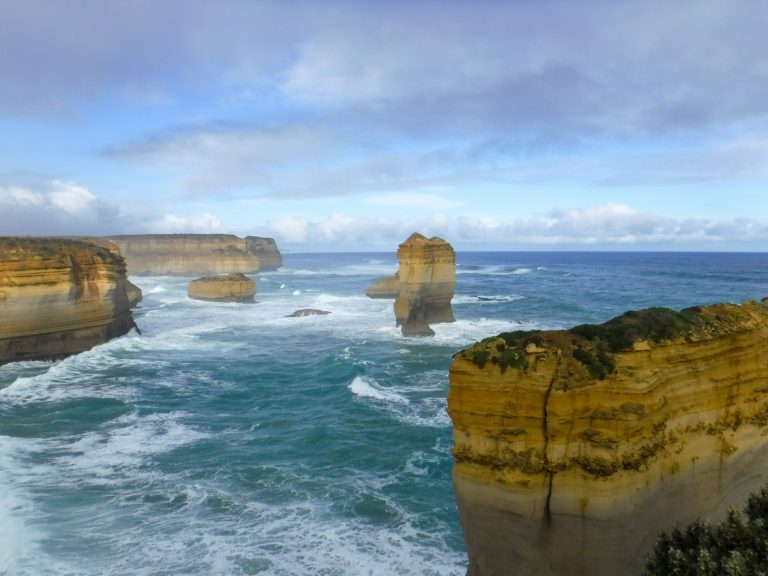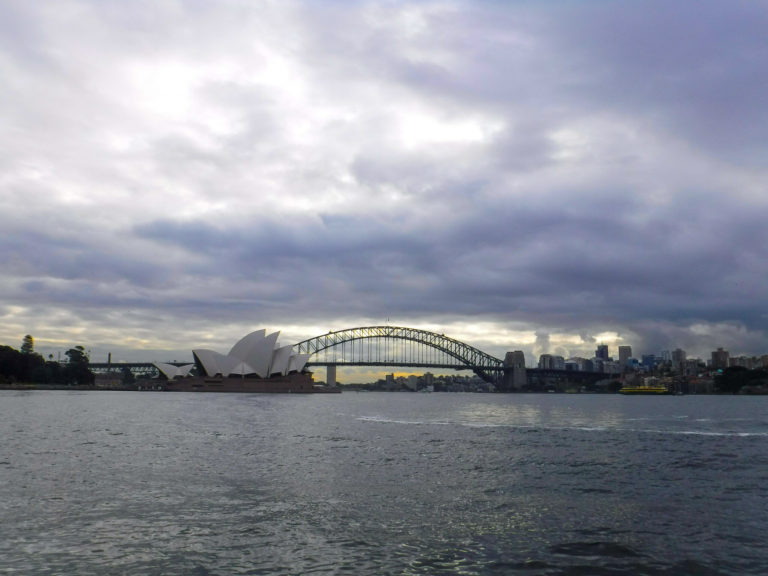The Thorough Guide to Australia’s Great Ocean Road
The 27 Best Stops on the Great Ocean Road, how to get there, where to stay, interactive map and more!
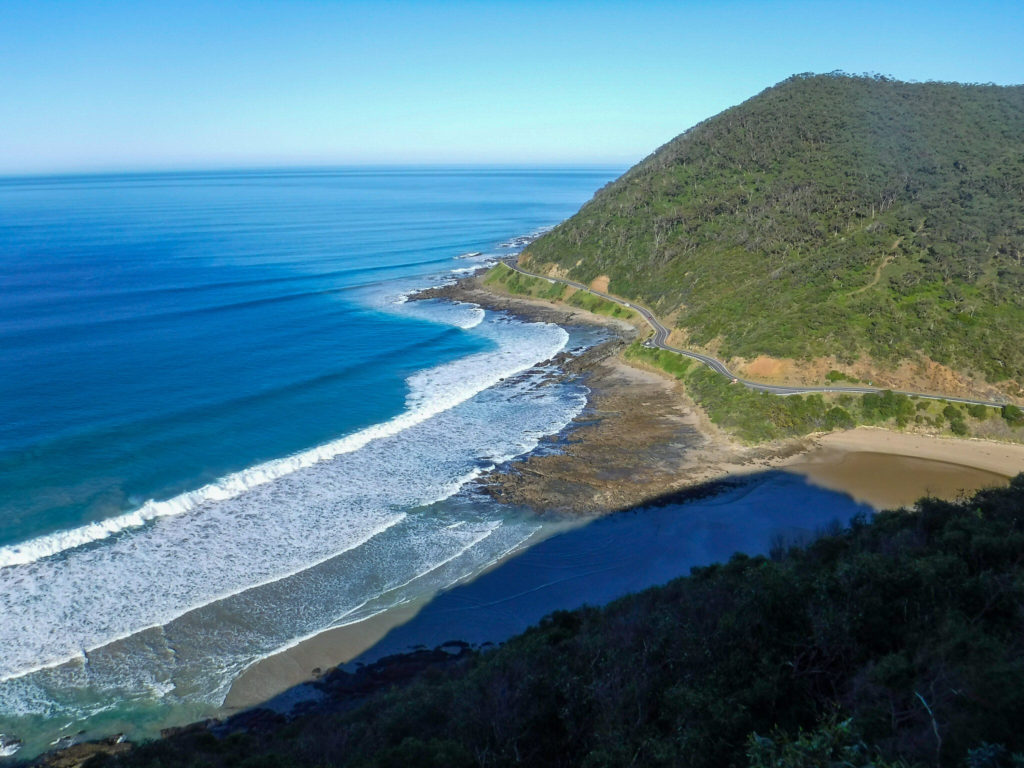
This post may contain affiliate links, which means we might earn a small commission on anything purchased through these links at no extra cost to you. Learn more on our disclaimer page.
Discover the best things to do on the Great Ocean Road including all the stops in order, what to see, where to stay and more to help you plan the perfect Great Ocean Road itinerary. We’ve not only listed all the stops on the Great Ocean Road in order, but we’ve also rounded up all the best spots you can’t miss.
Time needed: 3-5 days.
When to go: March-April for warmer weather and to avoid the Summer crowds, June-October for the quietest roads, but chances of rain are higher.
Weather: Averages of 7°C-15°C in the Winter and 15°C-25°C in the Summer.
Side of the road: Drive on the left.
Language Spoken: English.
Currency: Australian Dollar.
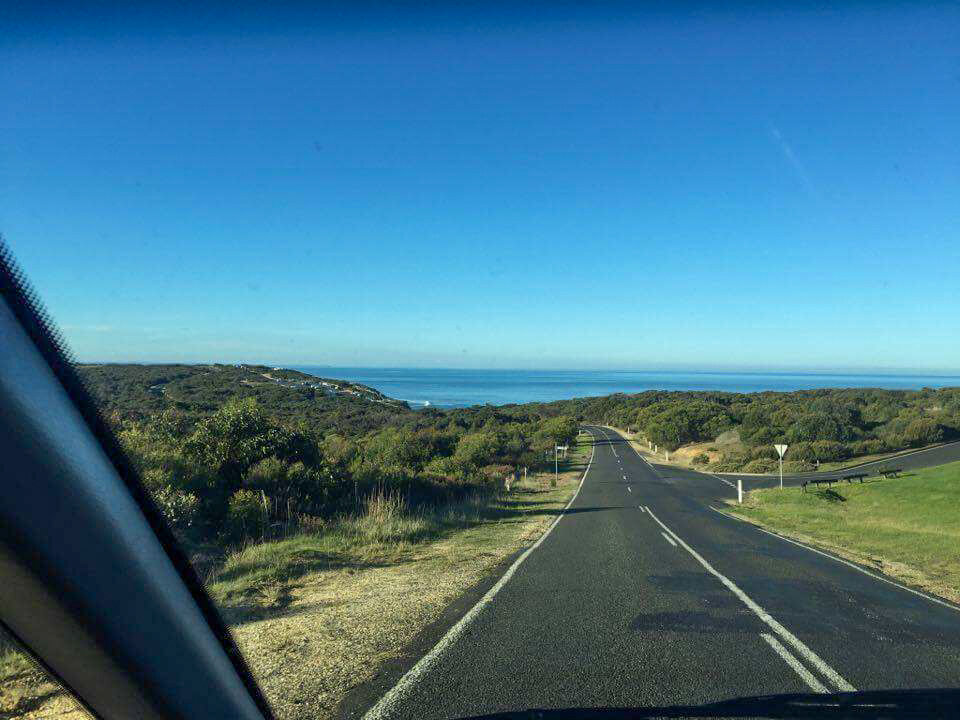
Where is the Great Ocean Road?
The Great Ocean Road is an Australian National Heritage listed stretch of road that winds more than 240km along the south-east coast of Australia between the coastal cities of Torquay and Allansford. It makes for one of the most epic road trips in the world. On the way you’ll discover lots of pristine beaches, stunning lookouts, impressive coastal landscapes and possibly even local Aussie wildlife!
The Great Ocean Road is also the world’s longest war memorial, built by returned WWI soldiers as a memorial for all those who lost their lives in the war. This stretch of coast is infamous for its treacherous seas too.
A bit of history: The 130 km stretch of the Great Ocean Road from Cape Otway to Port Fairy is known as the Shipwreck Coast. During the late 19th and early 20th centuries almost 700 ships and their crews met their fate in these rocky waters. Of these only about 200 have ever been recovered. Check out Loch Ard Gorge later in this article for more shipwreck history.
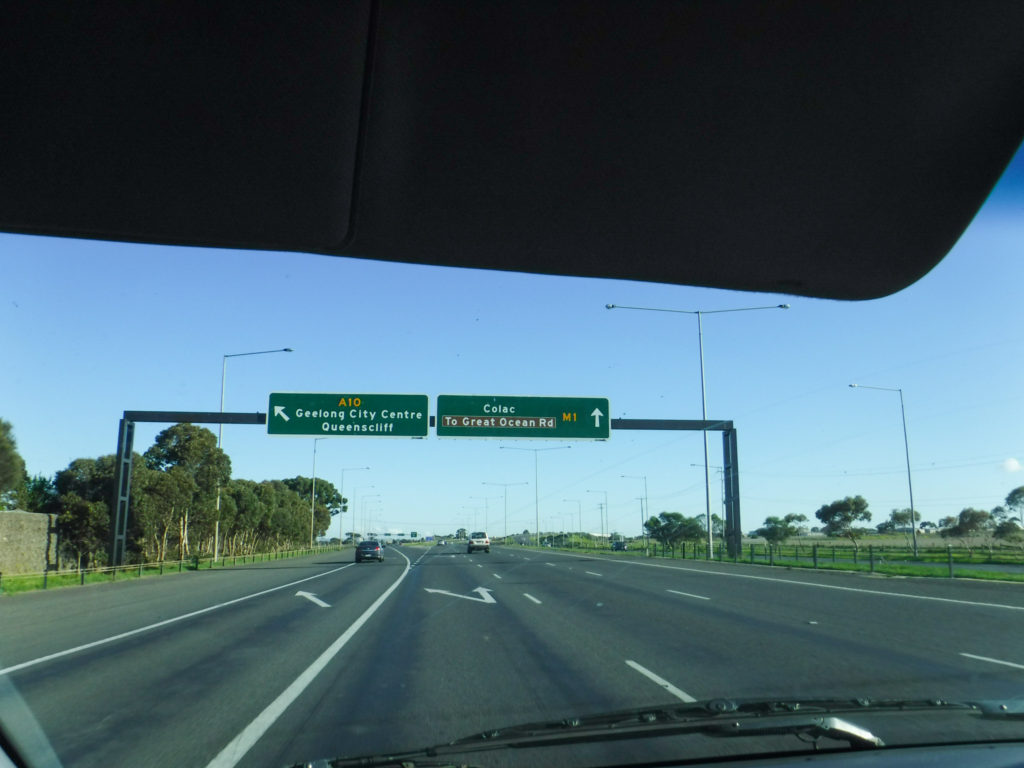
Every stop on the Great Ocean Road route
- Torquay
- Bells Beach
- Point Addis Beach Lookout
- Reef Lookout
- Aireys Inlet
- Eagle Rock Lookout
- The Split Point Lighthouse
- Memorial Arch at Eastern View
- Lorne
- Erskine Falls
- Teddy’s Lookout
- Sheoak Falls, Henderson Falls, Phantom Falls
- Cumberland Falls
- Mount Defiance Lookout
- Kennett River
- Carisbrook Falls
- Marriner’s Lookout
- Apollo Bay
- Maits Rest Rainforest Walk
- Great Otway National Park & lightstation
- Castle Cove Lookout
- Crowes Lookout
- The Gables
- Princetown Wetlands Boardwalk
- Gibson Steps
- The Twelve Apostles
- Loch Ard Gorge
- Port Campbell
- The Arch
- London Bridge
- The Grotto
- Halladale Point
- Bay of Martyrs
- Bay of Islands
- Magic Rock
- Allansford cheese world and Museum
- Logan’s beach, a whale nursery in Warrnambool
- Tower Hill Wildlife Reserve
The best stops on the Great Ocean Road route
As you can see form this mammoth list, there’s a lot to do on the Great Ocean Road, and you may not have time for all of it. We’ve listed below the main and best attractions on this route that you absolutely cannot miss!
1) Torquay
This little coastal town is just one and a half hours drive from Melbourne and is the gateway to the Great Ocean Road. You’ll find a big surf culture here as Torquay is the home of Bells Beach and the birthplace of iconic surf brands Rip Curl and Quicksilver. Torquay is the perfect place to learn to surf and you can book in a beginners lesson with a qualified instructor.
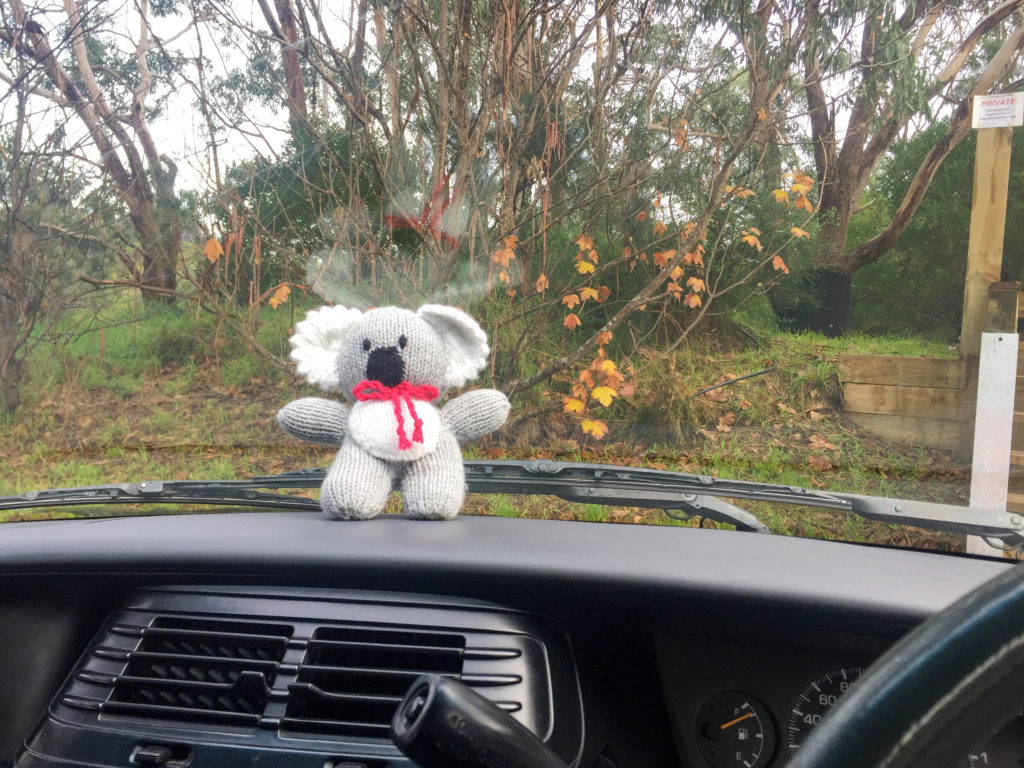
2) Bells Beach
Bells Beach is one of the world’s hottest surf hubs and is home to the annual Rip Curl Easter Pro, the longest running surf competition on the planet. It is named after William Bell, a Master Mariner, who owned much of the property here in the 1840s. Whether you’re a beginner or pro surfer, there’s no better place to ride the waves. As the first stop on the Great Ocean Road, it can get quite busy and you’ll often find the car park packed with other campers too.
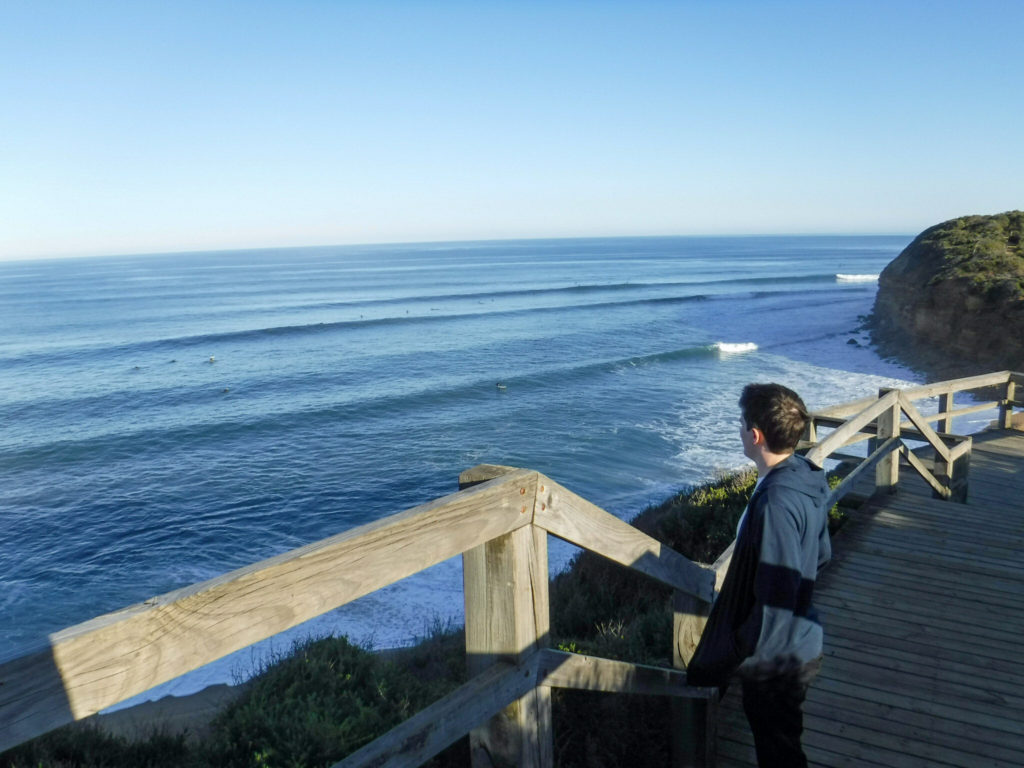
3) Aireys Inlet
This quaint coastal hamlet is probably best known for its red-crested Split Point Lighthouse, which is apparently haunted! This area features several lookouts which offer stunning views, including over the Eagle Rock Marine Sanctuary, Great Ocean Road and Phillip Island. It is also the gateway to Great Otway National Park.
4) The Split Point Lighthouse
You might recognise this as the famous lighthouse from the ‘80s show Round the twist. Tours run at at 11:00, 12:00, 13:00 and 14:00 daily and for AUD 14 you can climb to the top and enjoy the 360° coastal views. You can buy your entry ticket for a
You might recognise this as the famous lighthouse from the ‘80s show Round the twist. Tours run at at 11:00, 12:00, 13:00 and 14:00 daily and for AUD 14 you can climb to the top and enjoy the 360° coastal views. You can buy your entry ticket for a Split Point Lighthouse Tour here.
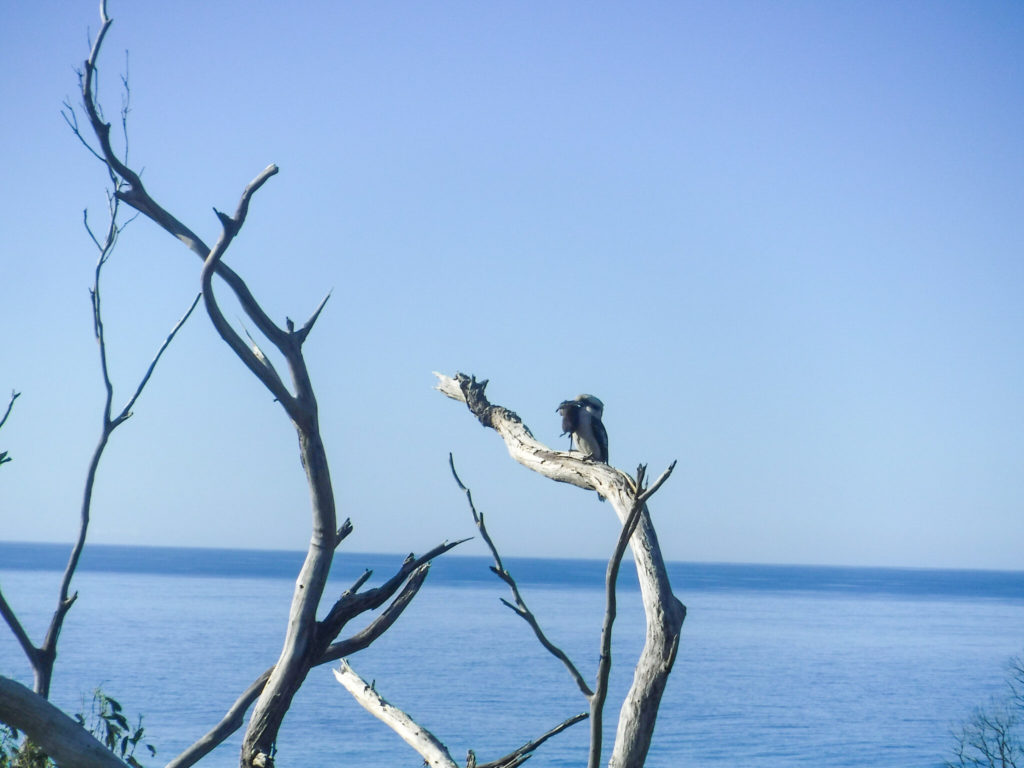
5) Memorial Arch at Eastern View
The Memorial Arch was erected in honour of the 3,000 returned WWI soldiers who built the Great Ocean Road by hand between 1919 and 1932. Although this is not the original (it had to be rebuilt several times), the arch marks the official start of the Great Ocean Road. There is a car park for you to stop and admire the arch up close or you can simply drive right under it – it’s impossible to miss!
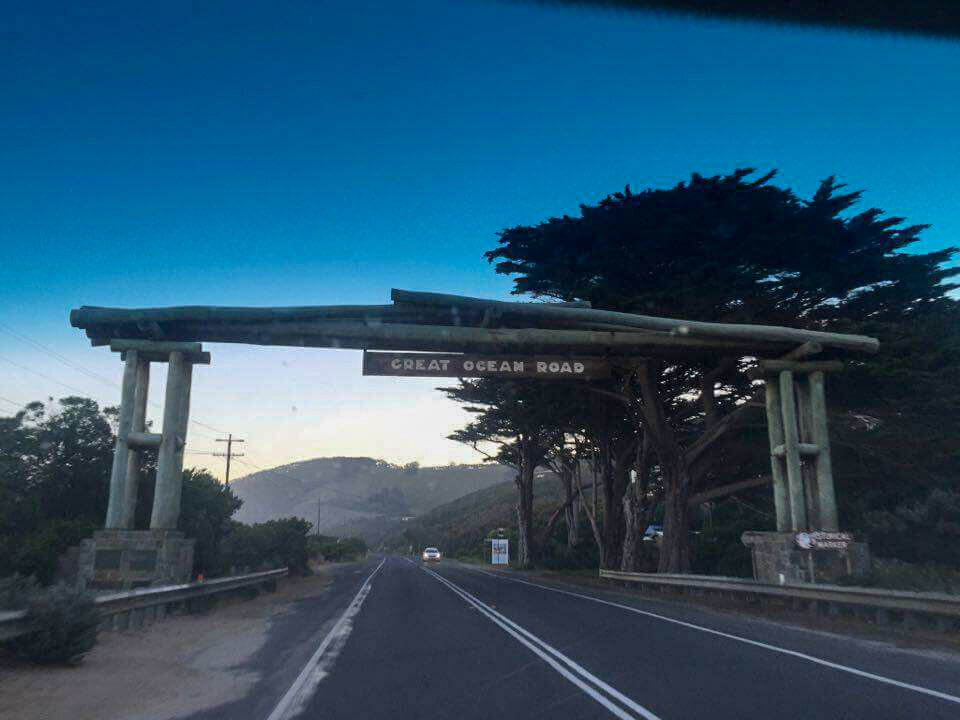
6) Lorne
Lorne is sometimes described as Melbourne’s equivalent to Byron Bay. On Mountjoy Parade you’ll find lots of waterfront cafés, restaurants and galleries, which is why the town is known for its arts community. Lorne beach is also very popular with surfers. If you’re a thrill seeker, consider the Shockwave Zip Coaster Experience, a long, fast zipline that travels 1,722 feet (525 meters) through the Otway Forest canopy.
7) Erskine Falls
Only a 10 minute drive from Lorne, Erskine Falls is a 30-metre high cascade. Two lookout points offer scenic views of the waterfall – make sure you go to the top and bottom! Descend the 230 stone steps into the lush gully to get a full view of one of the most popular waterfalls in the Otways. Hikers can try the full 23km circuit hike from Lorne right up to the falls.
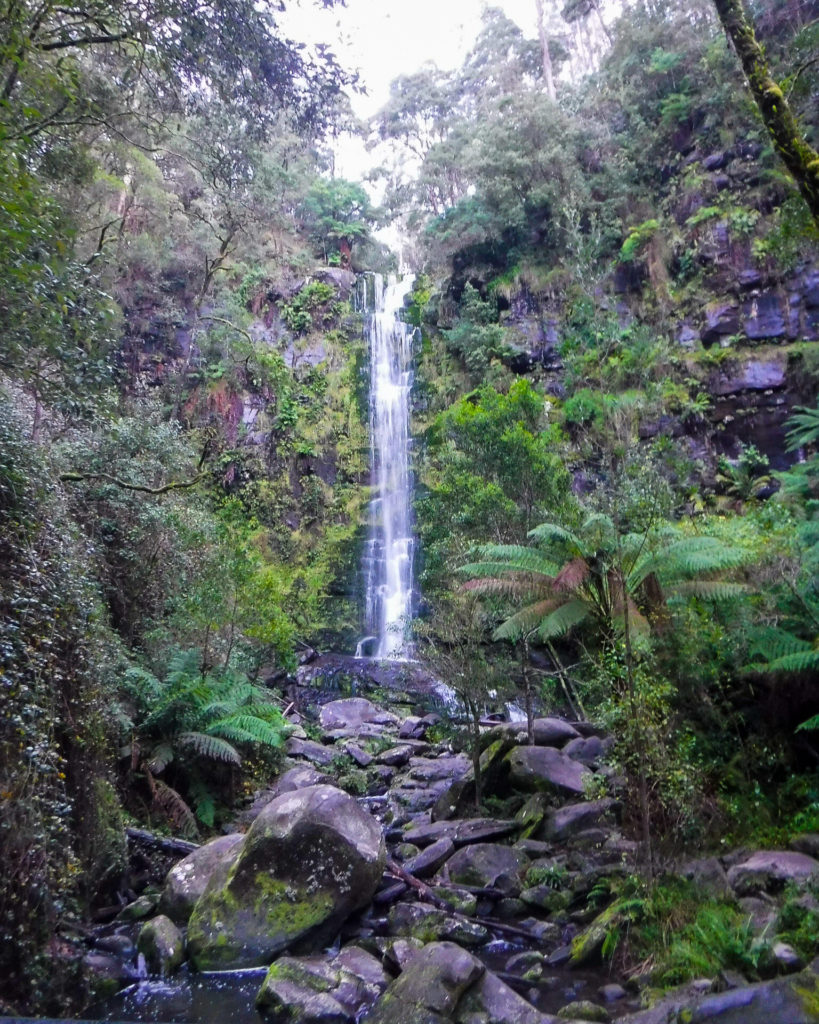
8) Sheoak Falls
About 10 minutes west of Lorne, Sheoak Falls is another very impressive waterfall. Follow the mouth of the river to the base of the 15m falls or venture further to Swallow Cave, where swallows can be seen nesting in spring. The walk from the carpark (which offers sea views) to Sheoak Falls only takes about 15 minutes one way.
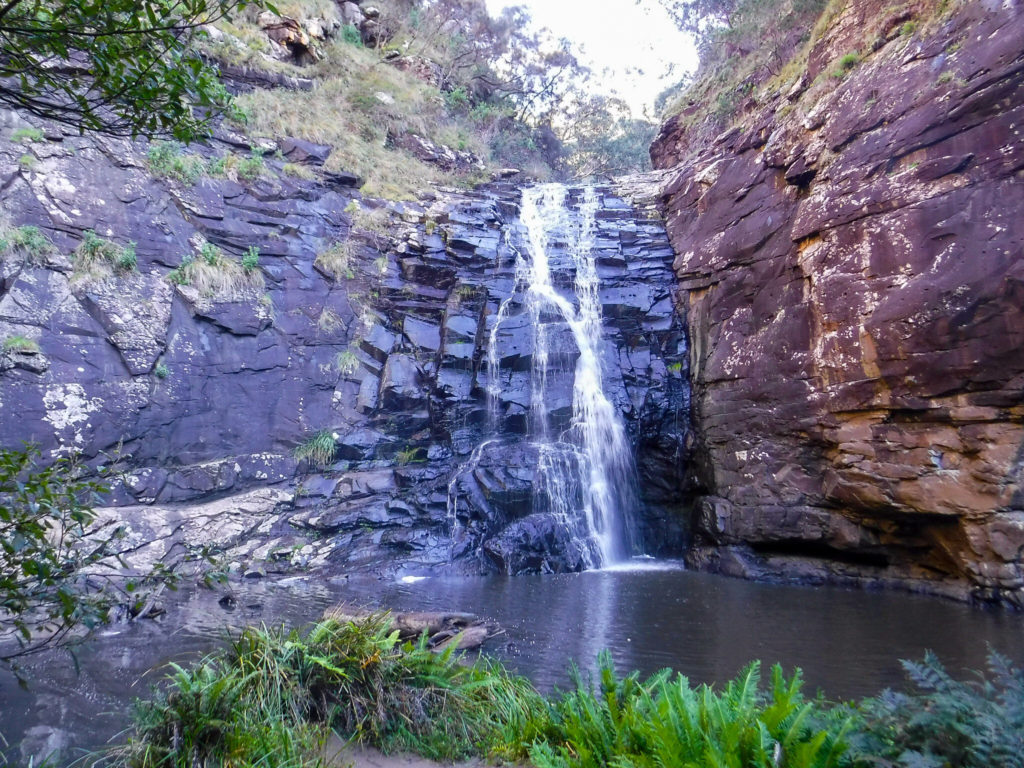
9) Teddy’s Lookout
Teddy’s Lookout (pictured at the top of this article) is 2km from Lorne. The car park is just a short walk to a viewing deck which offers incredible panoramic views of the coast line and the Great Ocean Road winding around the headland.

10) Henderson Falls, Phantom Falls, Cumberland Falls & Carisbrook Falls
There’s an abundance of waterfalls in the Otways, so if you’ve not had your fill of cascade walks, make sure to check out: Henderson Falls, Phantom Falls, Cumberland Falls & Carisbrook Falls. If you’re visiting in the height of Summer the falls can dry up so try to visit after a period of rain. Visit in the winter for the most impressive cascades.
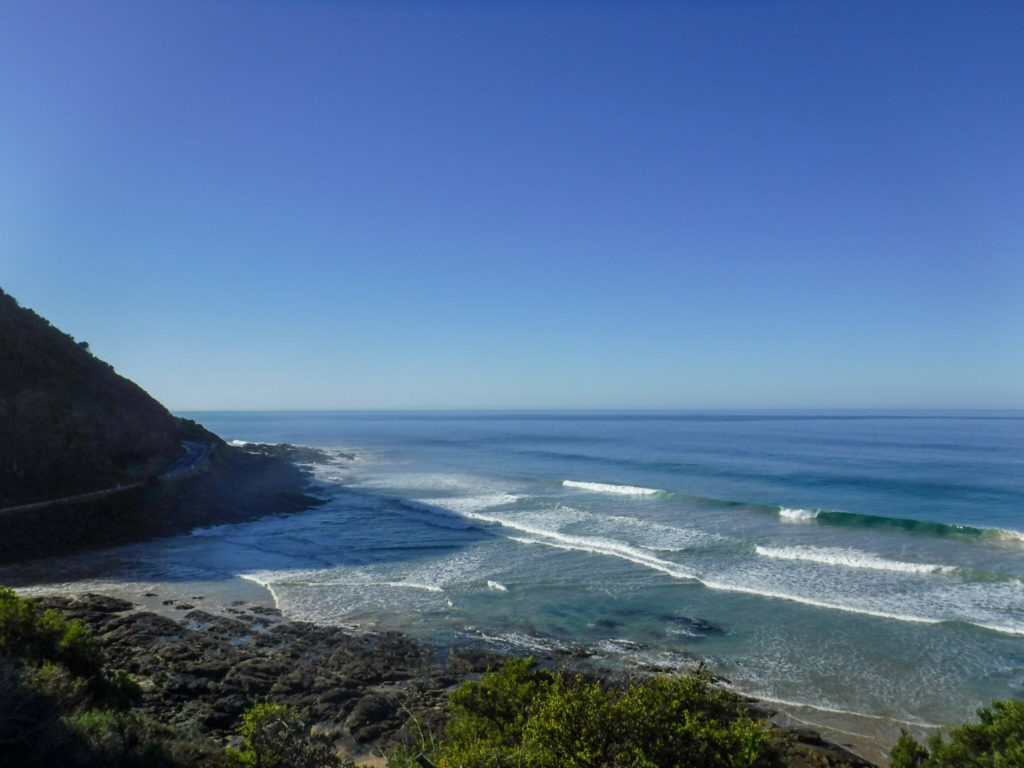
11) Kennett River
Possibly the most popular stop on the Great Ocean Road, Kennett River is a wildlife-lovers dream. The area has many birds including King Parrots, Cockatoos, Kookaburras, Purple Swamp Hens, Crimson Rosellas and Australian Wood Ducks. You can buy bird feed from the Koala Café and birds will land on your arms and head to be fed, although they’re so friendly they’ll land on you even if you’re empty handed!
Hikers can trek the 15km Koala Walk for a chance of spotting a fuzzy koala or two, but the best chance to see these marsupials is actually in the first 6km to Grey River Picnic Area. Koalas are fairly lazy and spend most of their time asleep, in the gum trees, which makes them fairly easy to spot!
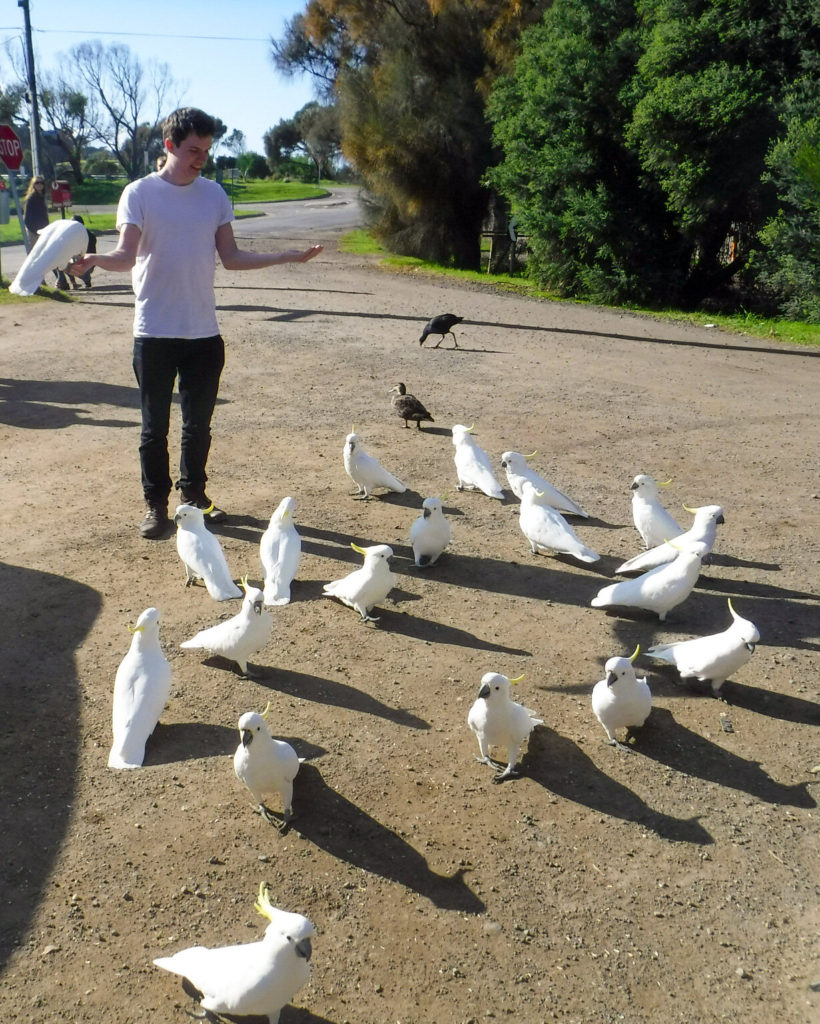
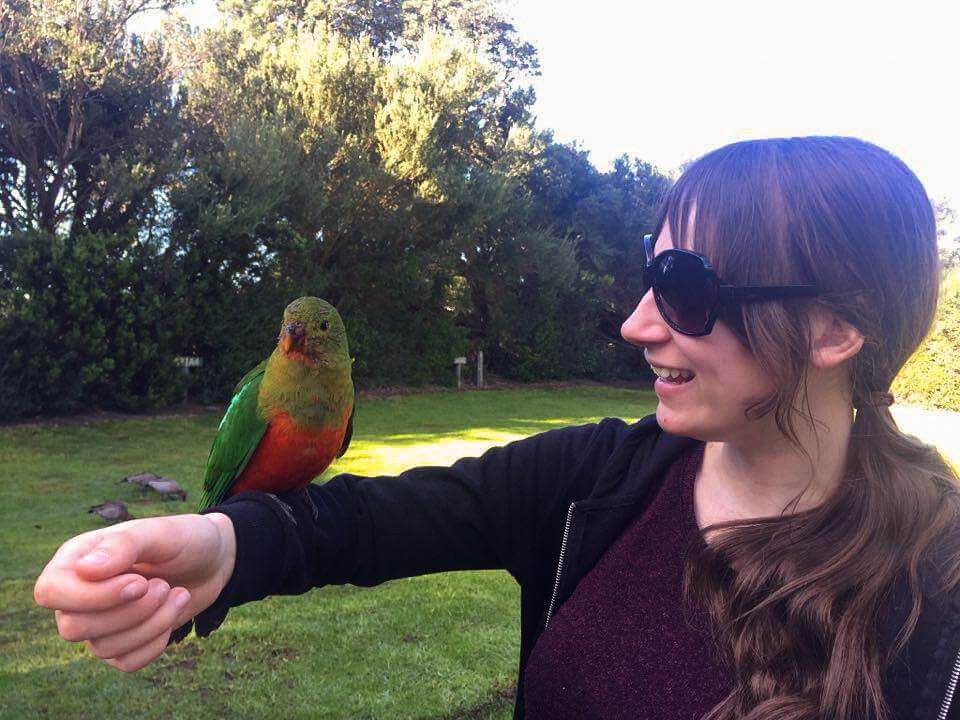

12) Apollo Bay
Apollo Bay is a coastal town of just under 1,600 people characterised by sloping green meadows and quiet sandy beaches. The beach here stretches 3.5 km, making Apollo Bay a popular tourist destination. In fact, the population here swells to 15,000 in Summer, an increase of nearly 1000%! Don’t miss the hilltop Marriner’s Lookout, which offers panoramic views over the ocean.
13) Maits Rest Rainforest Walk
This self-guided 800m circular rainforest walk takes you through Autralia’s rainforest habitat. The boardwalk takes about 30 minutes to walk around and you’ll see old Myrtle Beech Trees up to 300 years old and tall tree ferns on the way. You may even see wallabies, koalas, ring-tailed possums and grey kangaroos if you’re lucky!
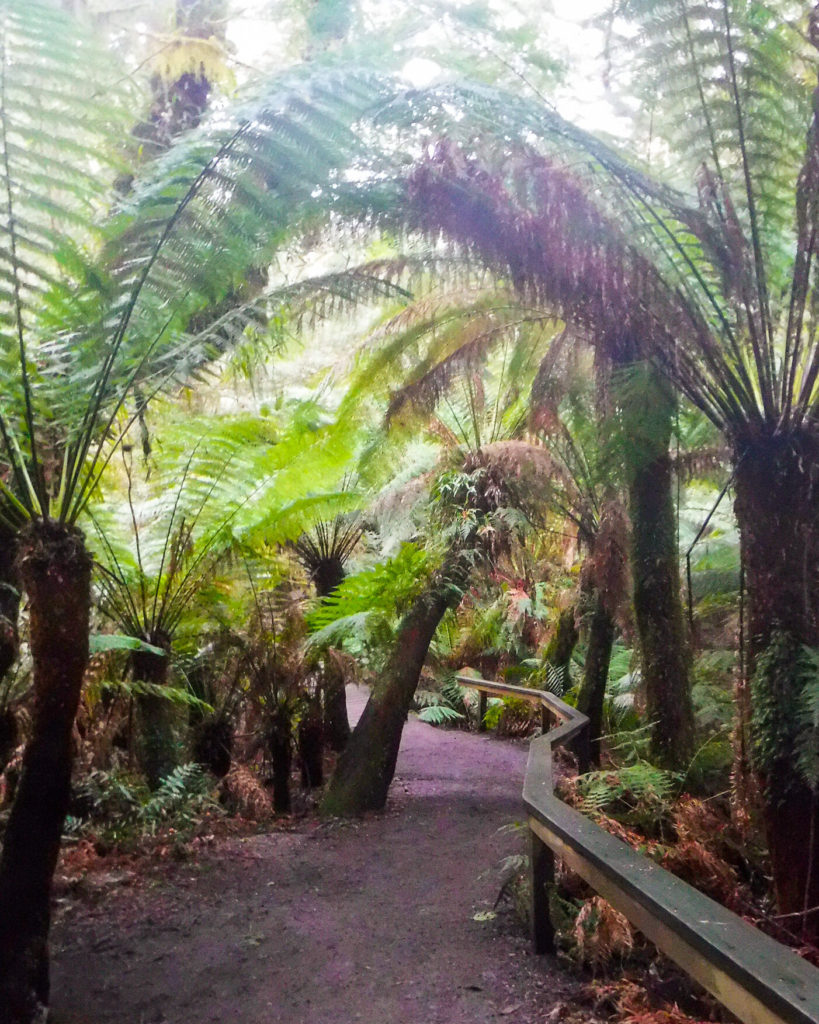
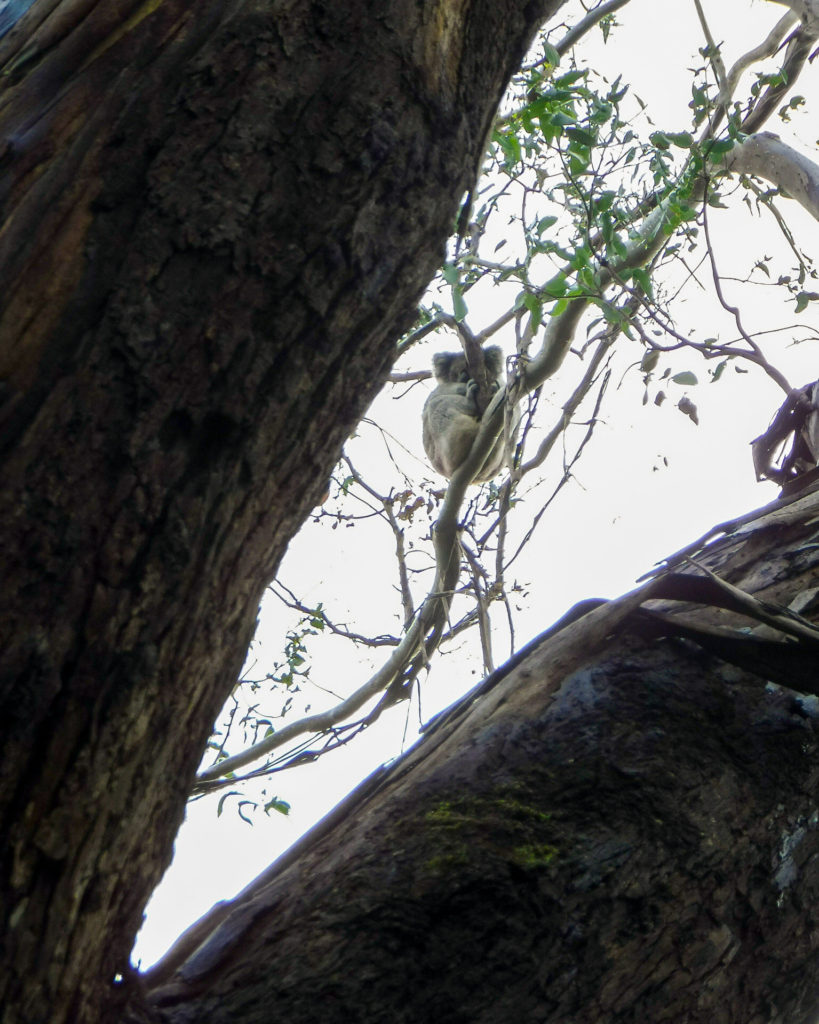
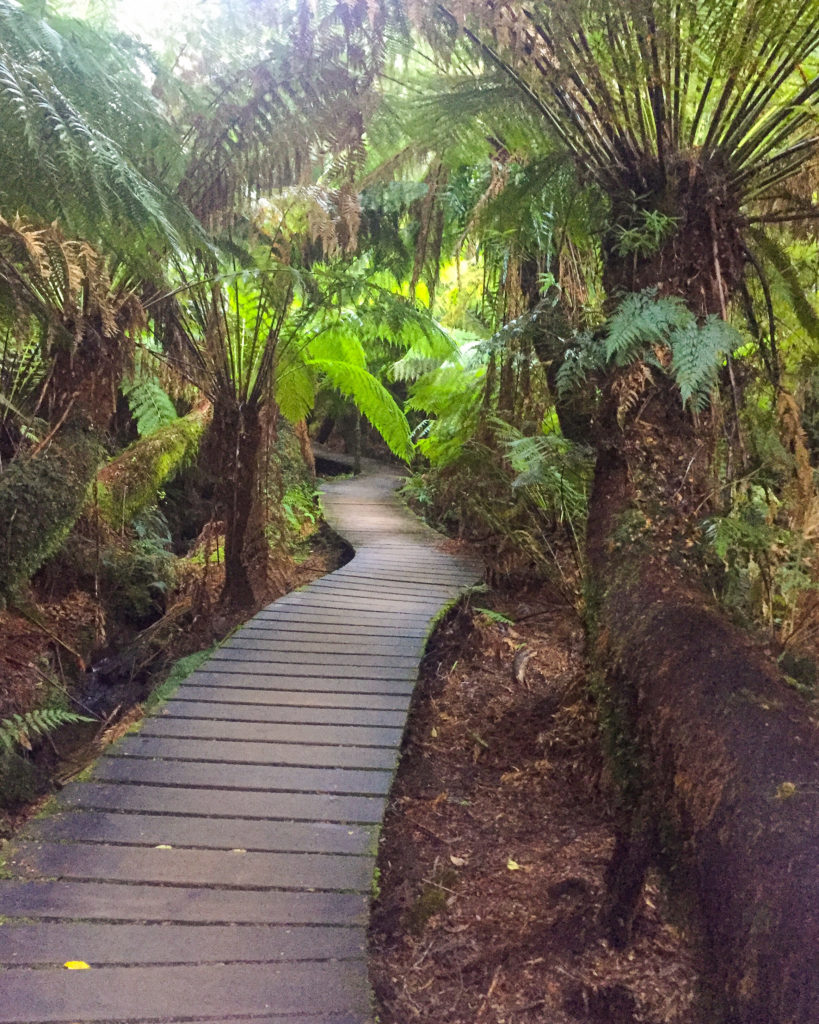
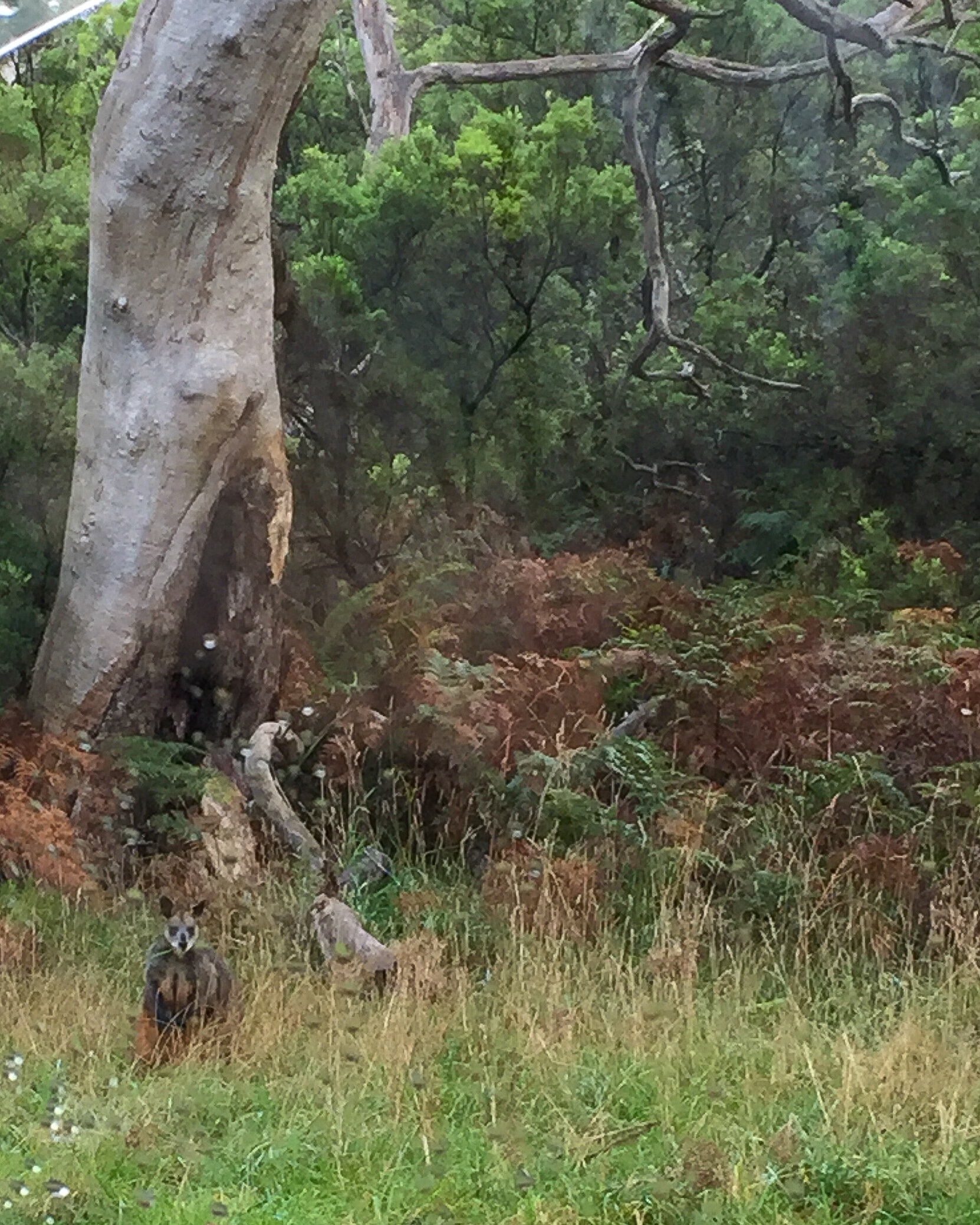
14) Great Otway National Park
Next stop: Great Otway National Park. Made up of 103,000 hectares of rainforest, beaches, waterfalls and heathlands, Great Otway National park is probably the best place to spot Koalas on the great Ocean Road. The park is dotted with waterfalls, including Hopetoun Falls and the famous 3 cascades of Triplet Falls. Most famous of all though is probably Cape Otway Lightstation. Built in 1848, this light house is perched on the cliff-edge, overlooking Bass Strait. You can climb the tower on a tour, but you must pre-book. Adventure seekers can fly high at Otway Fly Treetop Walk, which features a tree-top walk and a zipline.
If you’re a wildlife lover, consider joining a Guided Wildlife Walk, a 75-minute guided walk through the magical Otways bushland.
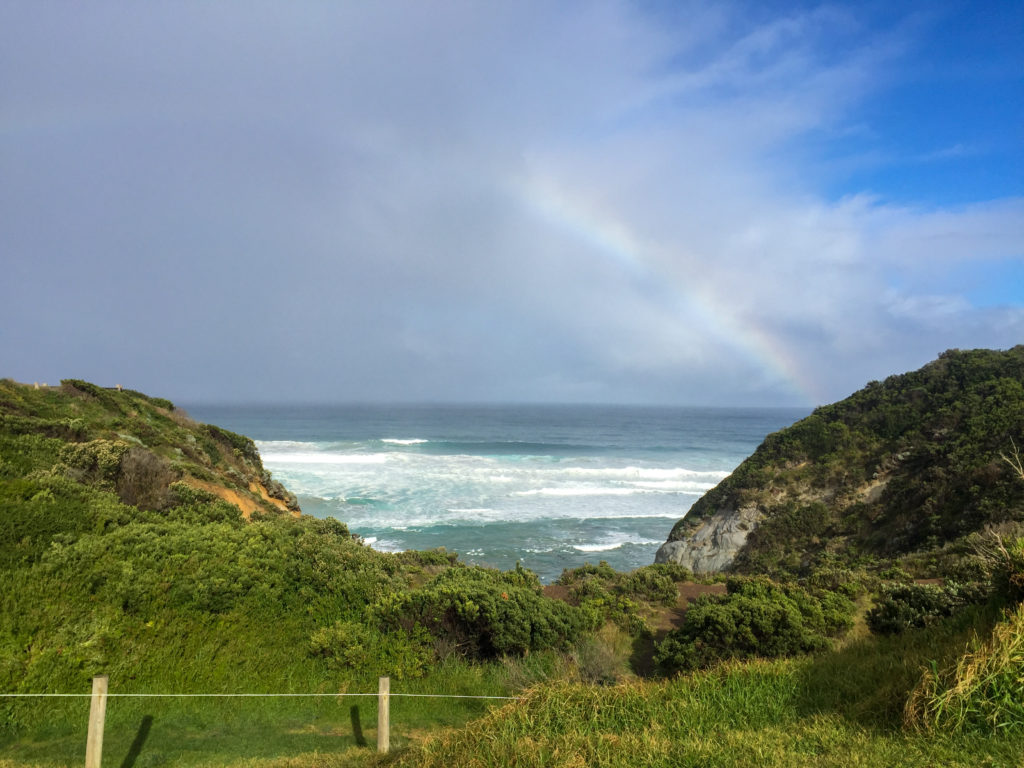
15) The Gables
This easy return walk through a Casuarina grove takes you to the edge of one of the highest sea cliffs on mainland Australia. The lookout offers spectacular views of the ocean and is perfect for bird and whale spotting between June and September.
16) Gibson Steps
The Gibson steps is a staircase of 86 steps that leads down the cliff face to the beach. The steps were first carved by the local Kirrae Whurrong people. Later, a local settler named Hugh Gibson spent his time carving the steps and maintaining them so that he could access the beach, hence the Gibson Steps.
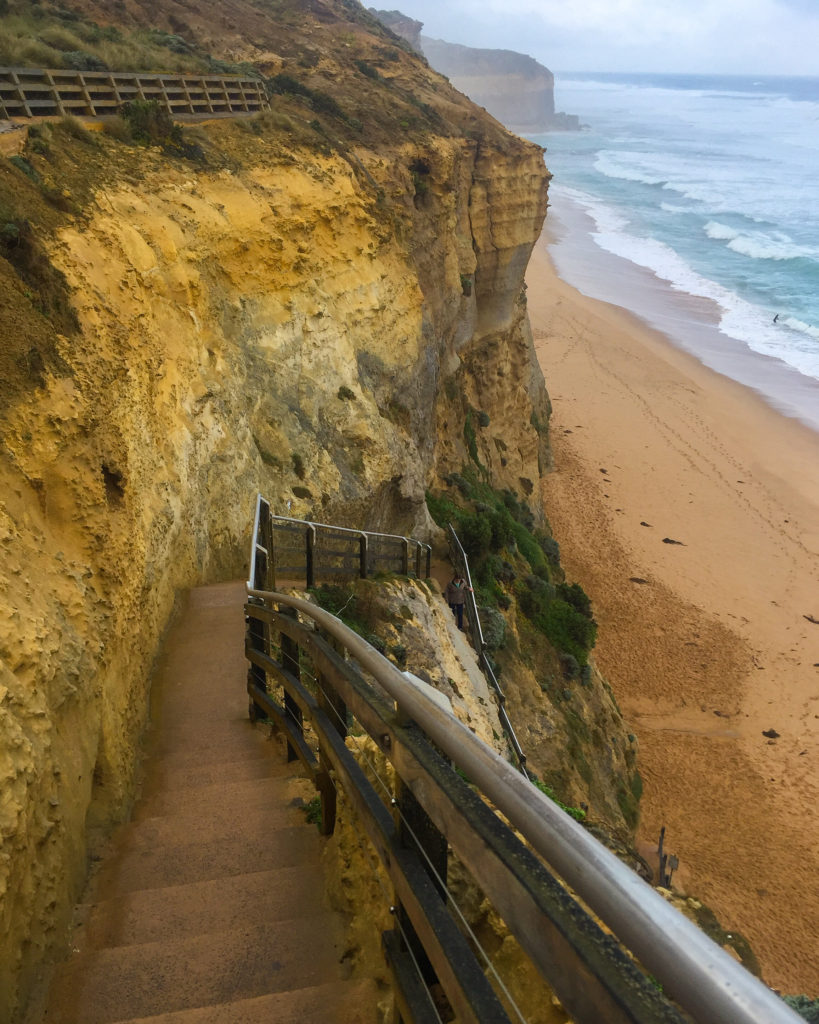
17) The Twelve Apostles
The Twelves Apostles is the most iconic section of the whole Great Ocean Road route. These towering limestone stacks are over 45 meters high and were created over 20 million years ago. Only eight of the twelve are still left standing and you can view them by walking the wooden walkway.
Adventure seekers can Skydive over the Twelve Apostles from 15,000 feet, soaking up the dramatic landscape in a once in a lifetime experience.
Pro-tip: The middle of the day can get very busy as this is when the tour buses usually stop. Try to time your visit with sunrise or sunset.
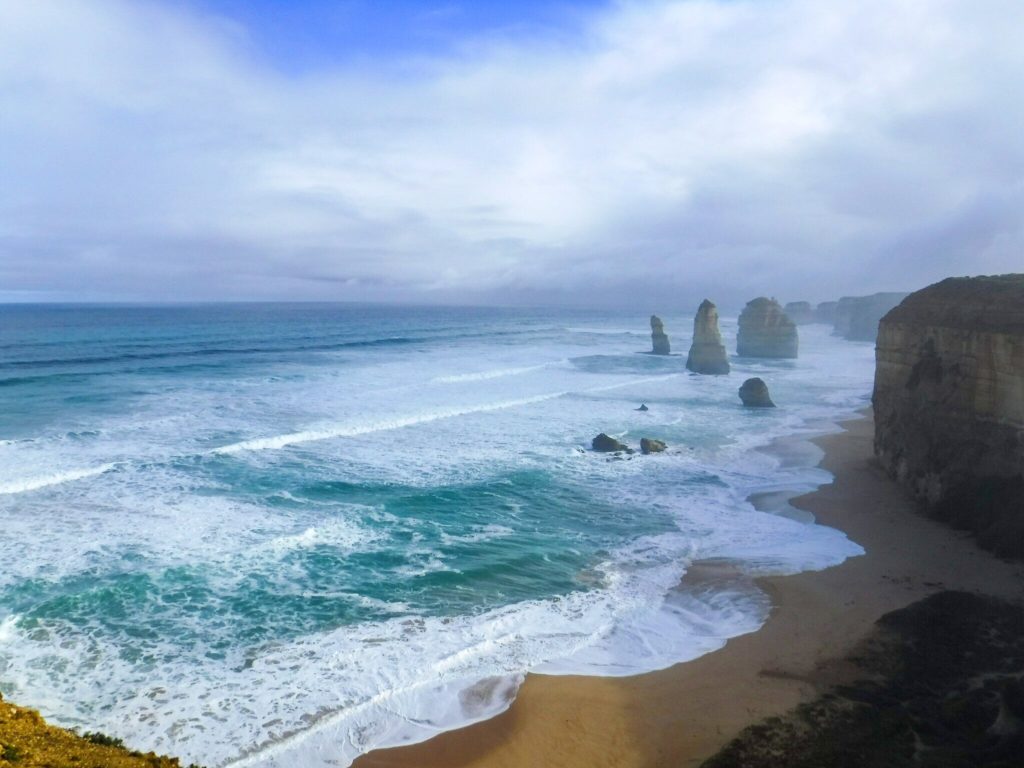
18) Loch Ard Gorge
Loch Ard Gorge is named after the Loch Ard ship that ran aground in June 1878, as it was coming to the end of a three-month voyage from England to Melbourne. Of all those onboard only two survived, Tom and Eva. The two unconnected stacks here have been officially named after them.
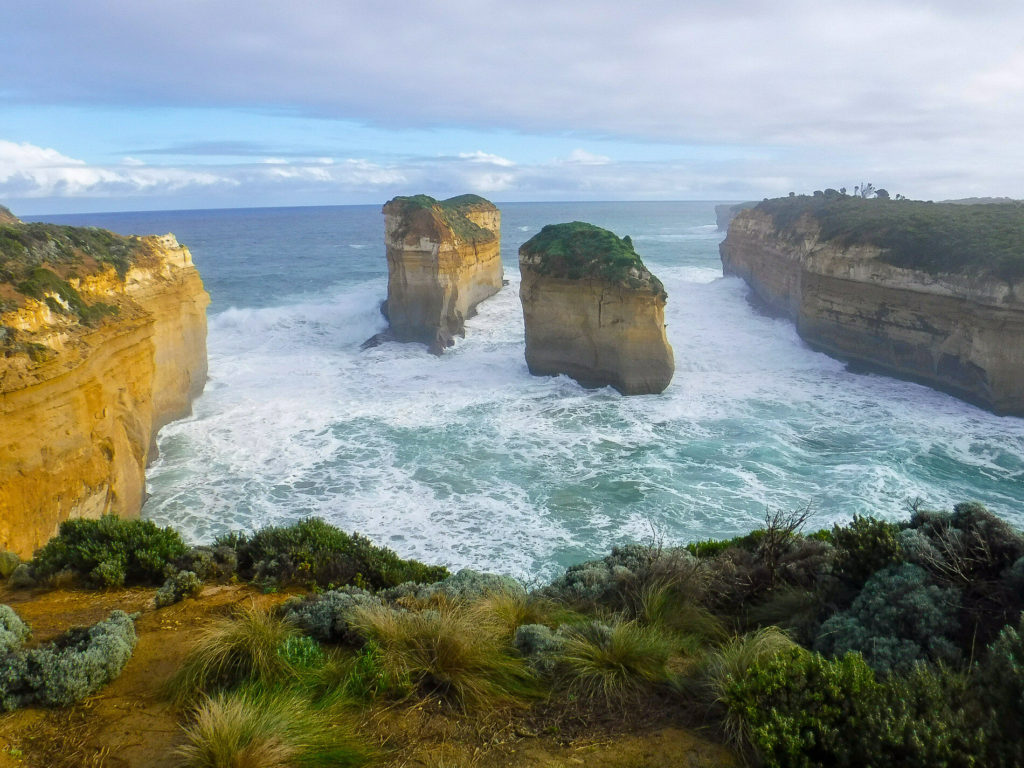
19) Port Campbell
This sweet little coastal town is home to restaurants and cafes with views of the beach, bakeries selling homemade goodies (try the pies!), and plenty of vibrant shops and galleries to explore. Look out for pelicans by the beach too!
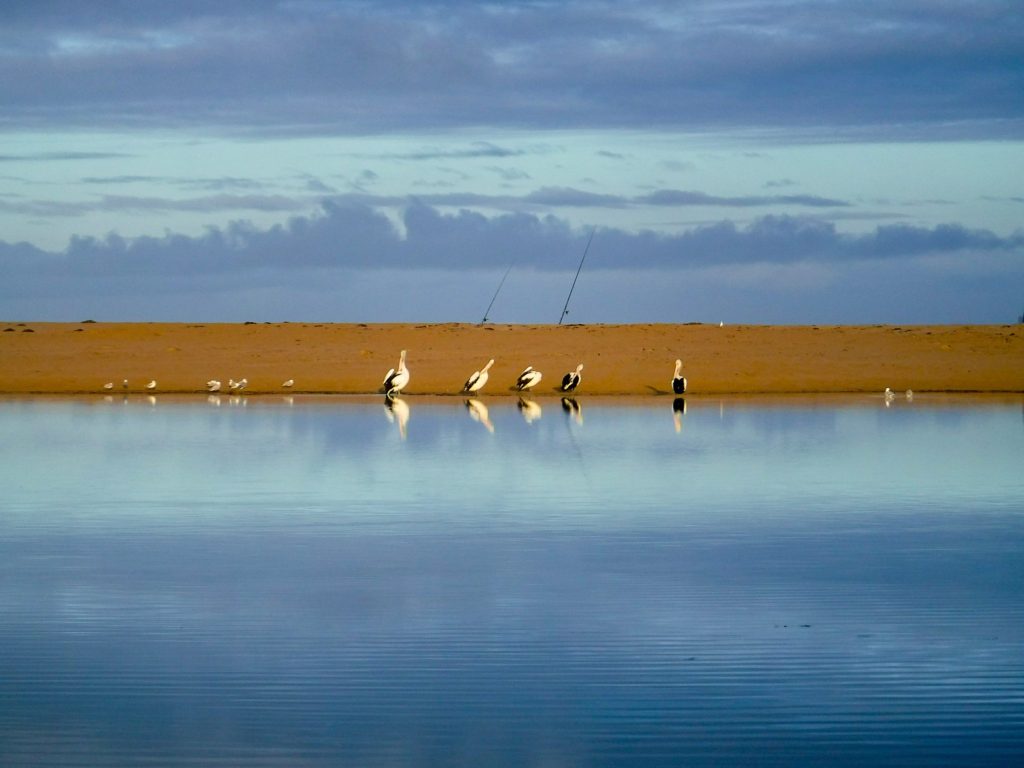
20) The Arch
Most people miss The Arch and head straight to London Bridge (which could be caused by confusion over the fact London Bridge is also called London Arch). This archway formed over thousands of years and is definitely worth a stop. A short walk from the car park will take you to a lookout where you can watch the waves crash against the cliffs and the swell pool under the archway.
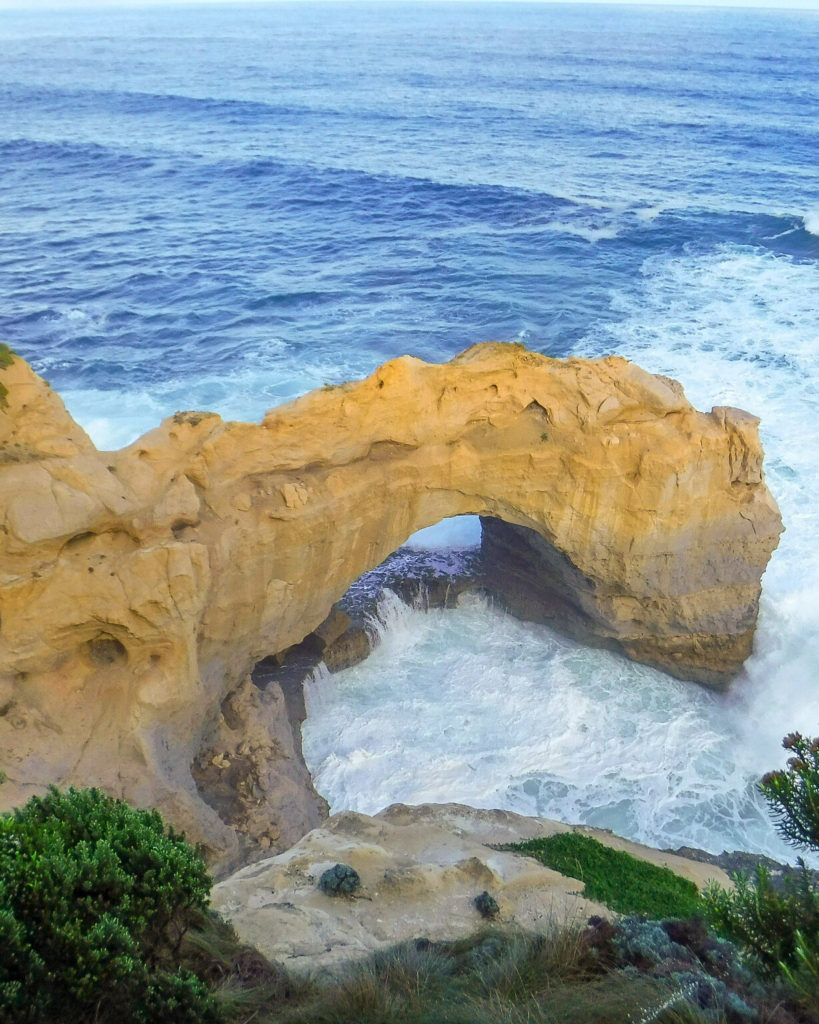
21) London Bridge
Once a natural double arch, London Bridge is now an isolated, singular limestone arch. You used to be able to walk from the mainland to to the edge of the arches, until erosion caused the middle of the bridge to collapse into the sea in 1990. In fact, when it collapsed, two tourists were left stranded on the new island (don’t worry, they were airlifted to safety).
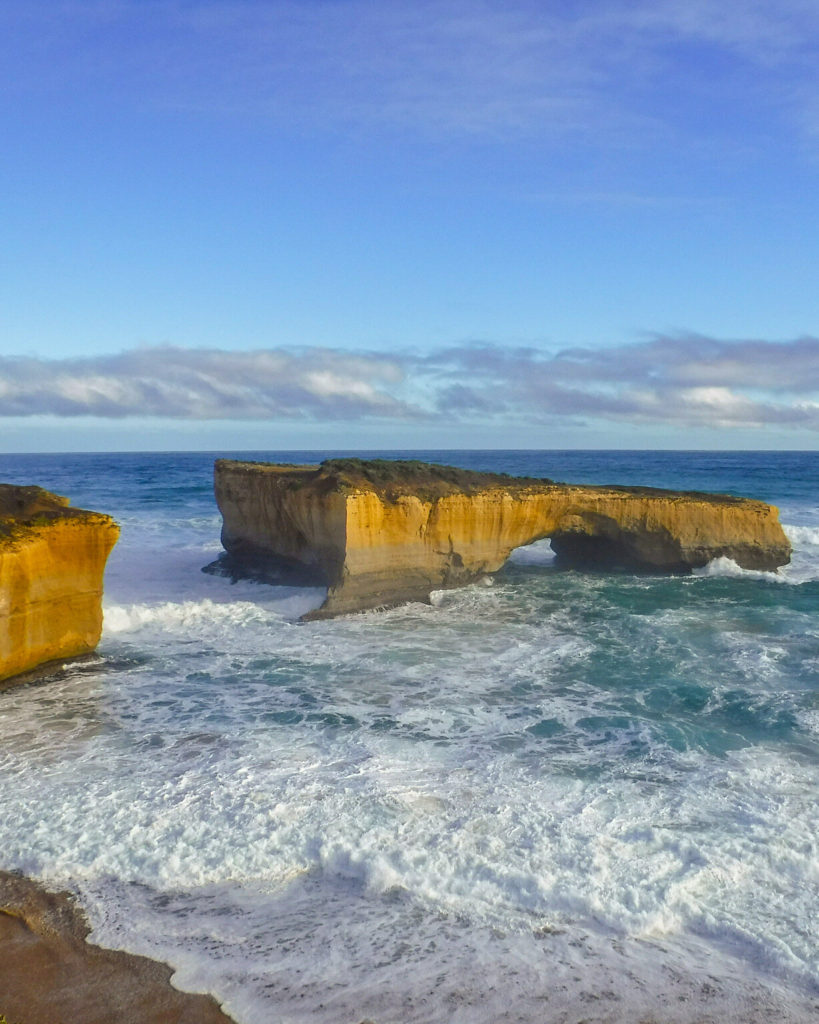
22) The Grotto
This hollowed out cave is a natural window to the sea. It is actually a sinkhole that you can visit by following the winding wooden stairs from the car park down to the bottom. Be sure to visit during low tide so that you can see the ocean behind the Grotto.
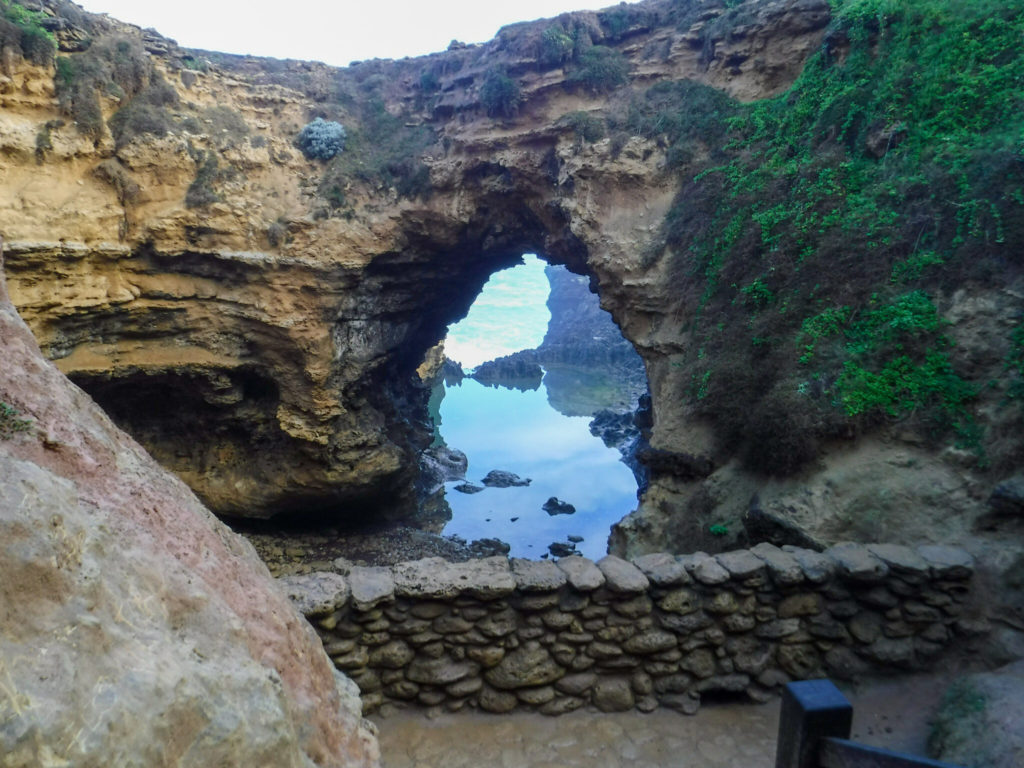
23) Bay of Martyrs
The Bay of Martyrs is also known as Massacre Point or Massacre Bay and has a very sad history. The story goes that when the European settlers came to the area, they killed off a huge group of Karrae-Wurrong Aboriginal men by walking them off the cliff. This stretch of coast forms part of the Bay of Islands Coastal Park, which is just as stunning as The Twelve Apostles but not nearly as touristy.
24) Bay of Islands
This coastal park is 32 kilometres long and stretches between Peterborough and Warrnambool. Not only does it contain some impressive limestone stacks and rugged coastline, but it’s an excellent location to spot wildlife. Look out for birds such as the Rufous Bristlebirds and Hooded Plovers. You can also see Fur Seals and Fairy Penguins if you are very lucky.

25) Allansford Cheese World and Museum
Cheese World and Museum contains objects and exhibits, including cheese and butter making implements, that are related to the farming industry and the history of Australia’s dairy industry. The shop is a cheese-lovers dream with plenty of flavours to choose from.
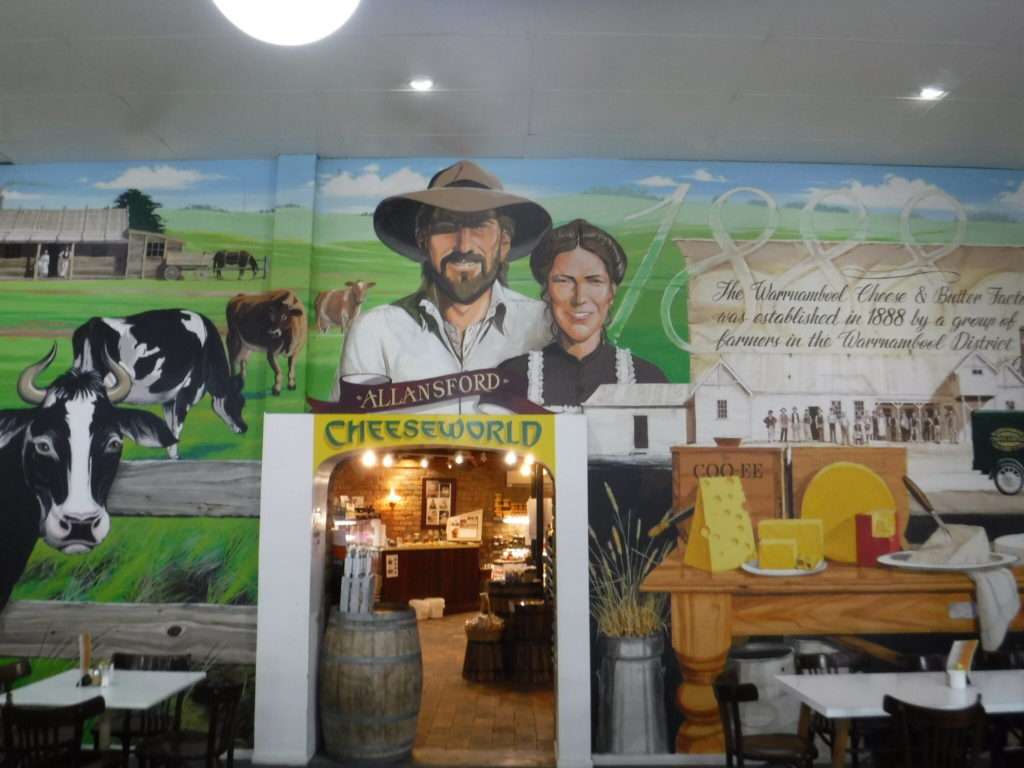
26) Logan’s beach, a whale nursery in Warrnambool
Whale lovers unite, this is the place for you! Southern Right Whales inhabit and breed in these waters from May to September and can often be spotted from the coast. This stretch of beach features a wooden boardwalk with plenty of benches to sit on and spot from. Patience and binoculars are recommended!

27) Tower Hill Wildlife Reserve
Tower Hill Wildlife Reserve sits inside a dormant volcano and is home to some of Australia’s best loved wildlife: Emus, kangaroos, koalas, swans, ducks and blue wrens can all be spotted here. Take yourself on a self-guided nature walk, stop for a picnic and enjoy being at one with nature.
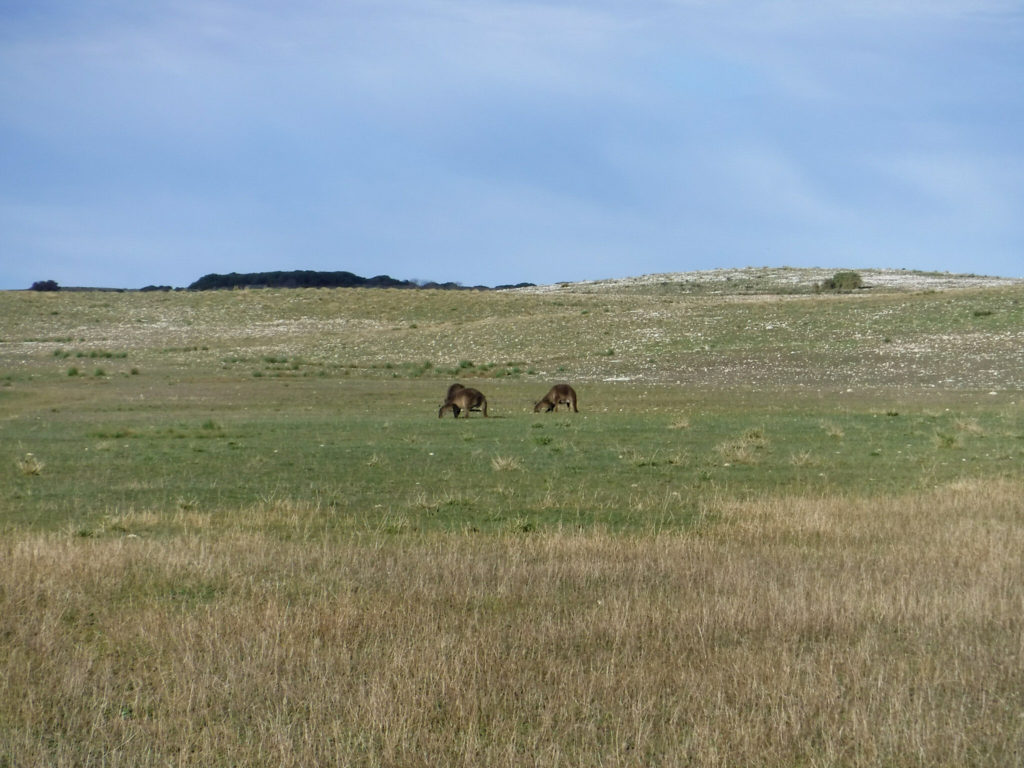
Interactive Great Ocean Road Map
How to get to the Great Ocean Road
To get to the Great Ocean Road by bus, catch a V/Line train from Southern Cross Station in Melbourne to Geelong, which takes 1 hour. Then take a bus from Geelong Station to your destination.
If you don’t have your own transport, you can book a full day tour from Melbourne, which will pick you up and drive you the whole way. Audio guides are available in a range of languages, and the tour takes in all the main sights, including the 12 Apostles, a rainforest walk in the Great Otway National Park, Australia’s surf coast, seaside towns and the opportunity to see koalas in the wild. Those who are keen to get to the 12 Apostles before the crowds can join a Great Ocean Road Reverse Eco Tour.
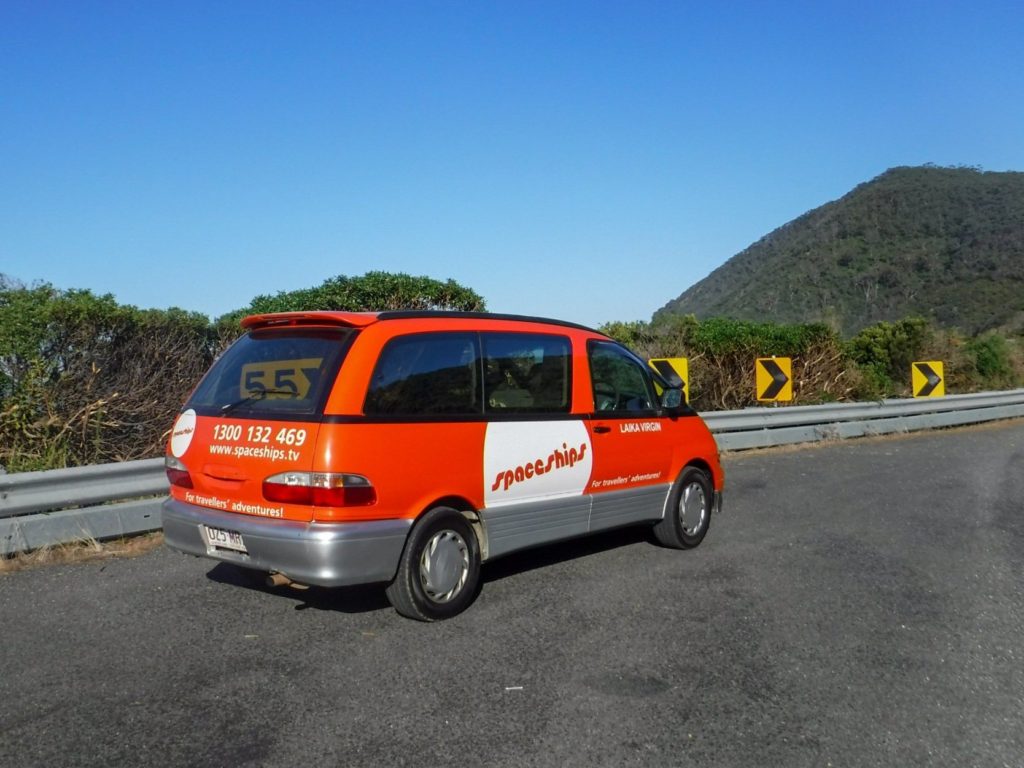
Looking for affordable accommodation with the freedom of having your own car?
Consider hiring a Spaceships Camper-Car! Each car comes fully equipped with all the living, cooking and sleeping facilities you need, plus you get unlimited kilometres, no one-way fees, free after-hours pick-up & drop-off service and 24-hour roadside service! Not only is it a bucket list experience to camp in Australia’s countryside, but a Spaceship is a great budget-friendly option for adventurers too. Pick up and drop off at Melbourne or Hobart to see the best that Tasmania has to offer.
Melbourne to Torquay in the car is 105 km and takes around 1 1/2 hours. Hiring a car and driving yourself is by far the best way to experience the Great Ocean Road and offers the most independence. We’d recommend driving the route from Torquay to Allansford, as Australia drives on the left this means you’re on the side of the road with the view.
A Private Helicopter Flight to the 12 Apostles from Melbourne offers a truly unique way to get to the Great Ocean Road for those without a car.
It is also possible to do explore on foot and hike the The Great Ocean Walk. This trek takes around 8 Days and starts at Apollo Bay.
Read next: Camping in a Compact Camper-Car in Australia
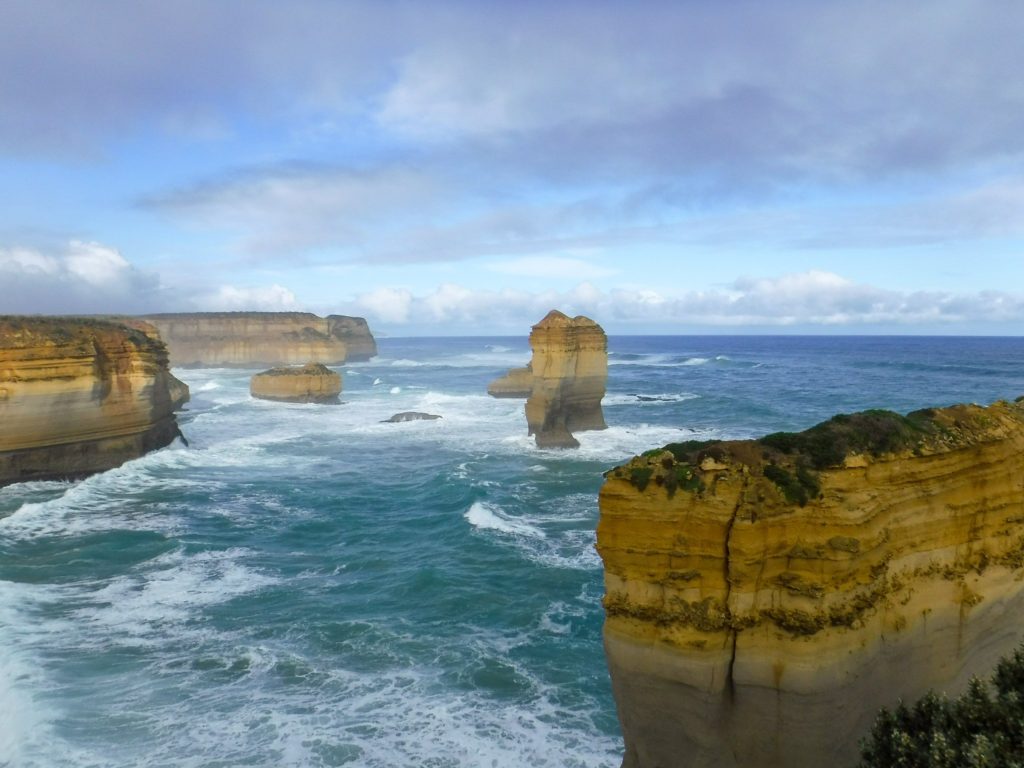
Great Ocean Road Accommodation
As you’ll probably be driving the Great Ocean Road (it is one of the best road trips in the world after all) you’ll have two accommodation options: camping or staying in the towns along the way.
There are plenty of accommodation options in the towns of Aireys Inlet, Lorne, Apollo Bay, Port Campbell and Warrnambool. Choose from hotels, hostels, B&Bs, self-catering cottages and holiday parks. These towns also have a lot of cafés and restaurants as well as grocery stores, so make great pit stops.
If you’re on a budget, or just prefer being closer to nature, then camping is a great option (and the option we would recommend). Hire a campervan or simply bring a tent in your car. There are lots of campsites along the Great Ocean Road and a lot of them are even free!
We would HIGHLY recommend hiring a Spaceship from Melbourne for your journey. These family-sized cars are converted into camper-cars and are a smaller and much cheaper option than hiring a campervan (although they do offer these as well).
Before you go, you absolutely must download the WikiCamps app. This app shows you all the campsites in Australia and includes useful information like price and facilities. You can filter to find free campsites and it also lists all the public toilets available, which is pretty vital when camping.

Read next:
Australia’s Great Ocean Road: A 3 Day Coastal Road Trip Itinerary
Camping in a Compact Camper-Car in Australia
The Thorough Guide to Australia’s Kangaroo Island
The Thorough Guide to Kangaroo Island’s Flinders Chase National Park
The 23 Best Things to do in Tasmania
The Thorough Guide to Tasmania’s Freycinet National Park
Check us out on social media!
